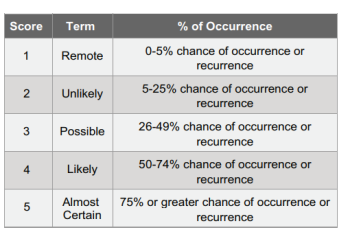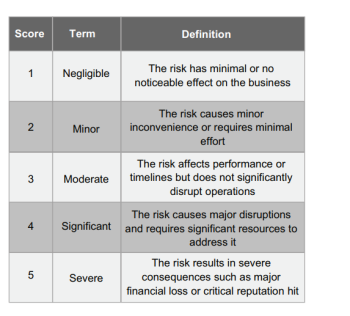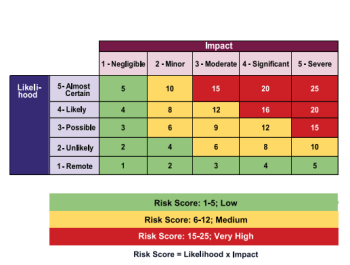
How does one Develop a Risk Matrix for their Business?
It is always useful to have a tool that helps determine the risk rating for each hazard. The tool in question is called “Risk Matrix”. A risk matrix is a visual tool for evaluating and prioritizing risks that can hurt an organization.
This article can help you create a risk matrix that is most suitable for your organization.
Why is a risk matrix important to a business?
Every business, regardless of its size or industry or country of origin, faces risks that can impact its operations, financial feasibility or reputation. In order to be ahead of the possible consequences of risk, it is important as a business to identify potential risks.
A risk matrix will help you identify and evaluate risks in various scenarios an organization might find itself in a systematic manner. A well-developed risk matrix can help your business remain proactive when addressing potential threats.
The universality of the risk matrix allows you to apply it to all businesses, regardless of its size and complexity. It allows you to present all risks that an organization might find itself, in a concise and simple graphical representation.
What makes a risk matrix?
Before you proceed with plotting your risk matrix, it is crucial to understand the following elements:
Likelihood
Likelihood simply means the probability that a given risk will occur. It is expressed in Qualitative and is scored from 1 to 5. It is usually classified as follows:

Impact
This means the potential consequences faced by the organization if the risk materializes. This is usually classified as follows:

Risk Criteria
What is a risk to your organization? Risks could be both financial risks as well as qualitative risks. Financial risks include market, credit and liquidity risks. These can be measured in quantitative terms. Qualitative risks include reputational risks, operational risks and strategic risks. These risks are typically not measured in financial terms however, this does not mean that the occurrence of these risks do not cause financial impacts.
It is crucial to identify the risks that are most relevant to your organization as this will help you prioritize them in your risk matrix.
Step 1: Establish the scope of your risks
Establish the scope of your risks, with respect to subject matter as well as time period. It is important to remember while identifying your risks that you do not filter out too much as this might lead to tunnel vision, causing us to ignore broader causes. Risks can be both internal and external factors that can pose a threat to the business. This includes market risks, financial risks, cybersecurity threats and regulatory compliance risks.
Step 2: Assess the likelihood and Impact of each risk
Determine how frequently each risk you have identified is likely to occur as well as its impact on your business. This can be quantified based on looking at the history of your business. Some risks can be assessed purely by qualitative factors. This can be because the probability of these events occurring can be unknown due to few historical episodes. In such a case, you can use simulation tools to approximate the probabilities and severities of the identified risks.
Step 3: Mapping your risk matrix
The risk matrix is typically a grid with the likelihood of risks on the vertical axis (Y- axis) and the impact on the horizontal axis (X-axis). The intersection between the likelihood and impact determines the risk level of each risk. Place the identified risks onto the matrix based on the assessment of its likelihood and impact. Once placed, the risks can be color-coded to enhance visual appeal and make it easier to be identified. The following color-coded system can be used:
Risk Assessment Criteria

Article Author:
Kavya Vilayanur
Consultant
Email: kavya@assureconsult.net
Arun Balu Pazhayannur
Chief Executive Officer of Assure Consulting W.L.L
Strategic Advisor of Russell Bedford Assure Audit,
Email: arunbp@assureconsult.net / arun.bp@aabahrain.com




